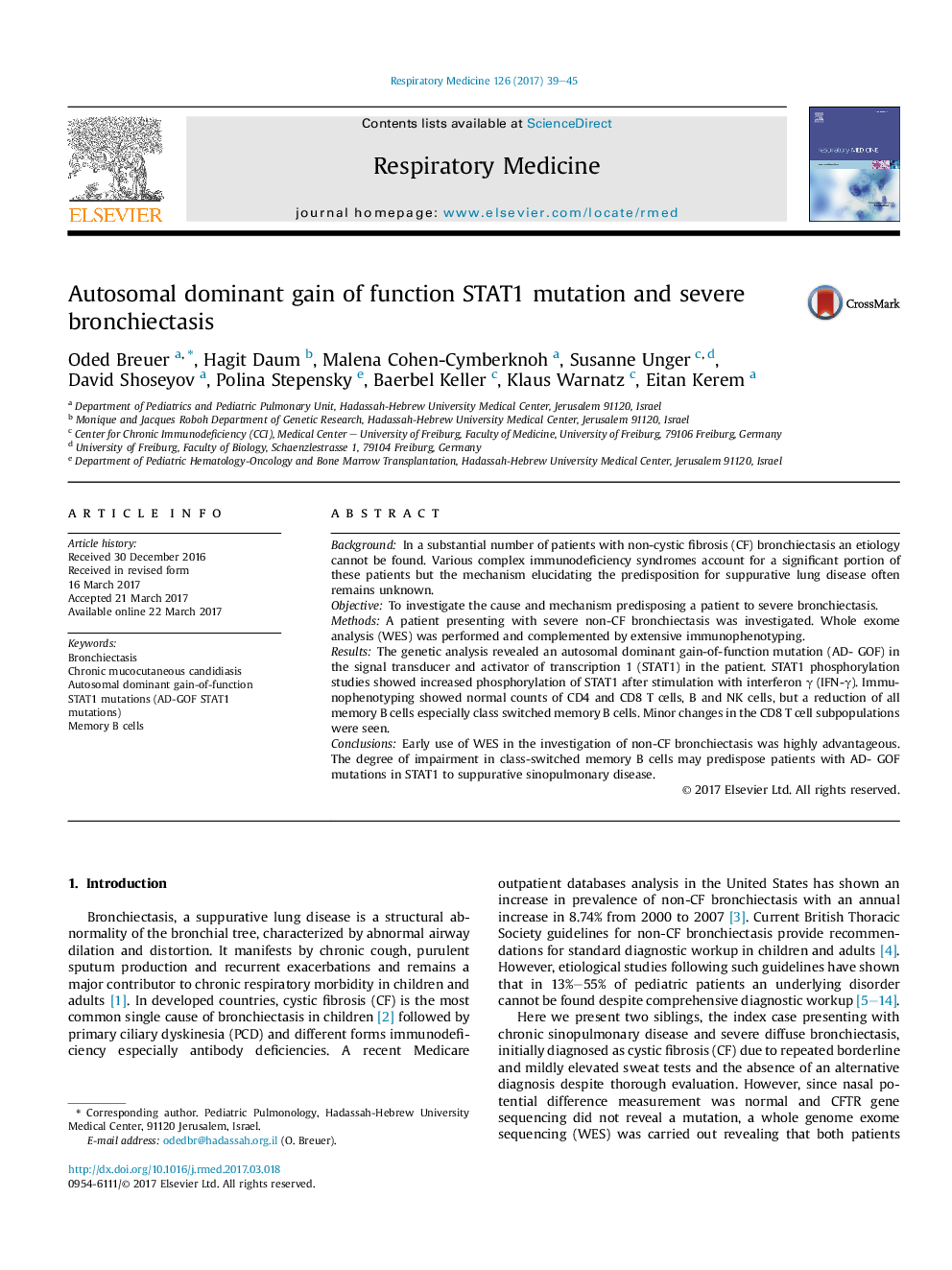| کد مقاله | کد نشریه | سال انتشار | مقاله انگلیسی | نسخه تمام متن |
|---|---|---|---|---|
| 5724985 | 1609440 | 2017 | 7 صفحه PDF | دانلود رایگان |

- AD-GOF mutations in STAT1 may cause sinopulmonary disease in a subset of patients.
- Impairment in class-switched memory B cells is present in these patients.
- The mechanism linking the B-cell dysfunction to the STAT1 mutation is unknown.
- The impairment in memory B cells may correlate to the sinopulmonary disease.
BackgroundIn a substantial number of patients with non-cystic fibrosis (CF) bronchiectasis an etiology cannot be found. Various complex immunodeficiency syndromes account for a significant portion of these patients but the mechanism elucidating the predisposition for suppurative lung disease often remains unknown.ObjectiveTo investigate the cause and mechanism predisposing a patient to severe bronchiectasis.MethodsA patient presenting with severe non-CF bronchiectasis was investigated. Whole exome analysis (WES) was performed and complemented by extensive immunophenotyping.ResultsThe genetic analysis revealed an autosomal dominant gain-of-function mutation (AD- GOF) in the signal transducer and activator of transcription 1 (STAT1) in the patient. STAT1 phosphorylation studies showed increased phosphorylation of STAT1 after stimulation with interferon γ (IFN-γ). Immunophenotyping showed normal counts of CD4 and CD8 T cells, B and NK cells, but a reduction of all memory B cells especially class switched memory B cells. Minor changes in the CD8 T cell subpopulations were seen.ConclusionsEarly use of WES in the investigation of non-CF bronchiectasis was highly advantageous. The degree of impairment in class-switched memory B cells may predispose patients with AD- GOF mutations in STAT1 to suppurative sinopulmonary disease.
Journal: Respiratory Medicine - Volume 126, May 2017, Pages 39-45